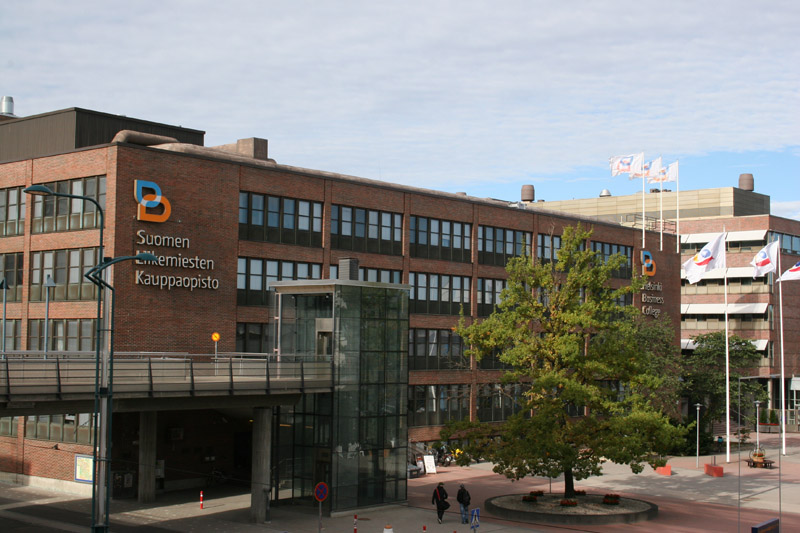Typewriters in Finland
The first machine in the 1870s
The first Finn to purchase a typewriter was Henrik Fabian Helminen, a merchant from the city of Jyväskylä. In 1876, during a trip to the United States, he learned about both the typewriter and the telephone and immediately ordered a Remington typewriter, the mass production of which began in 1878. The letters ä and ö were included in Helminen’s typewriter. At one stage, the Remington company and Helminen discussed whether he should be the company representative in Finland, but little is known of these negotiations. Helminen also installed the first telephone line in Finland by connecting his shop in Jyväskylä to his countryside farm.
The first typewritten message in Finnish was Helminen’s letter to his friend Gummerus from the Philadelphia World Exhibition on the ninth of June 1876, “The ladies here write four times faster with this machine than they can with an ink pen.” The letter remained in the Gummerus family until bishop Jaakko Gummerus read an article on typewriters in a Finnish periodical in 1932 and brought the letter to public attention.
Active in numerous business ventures, Helminen opened his own bookshop and was a partner in a printing house. He also published the magazine Keski-Suomi, the part-time editor of which was his good friend and associate K. J. Gummerus. After Helminen’s company went bankrupt in the late 1880s, the Gummerus family came into possession of the original typewriter.
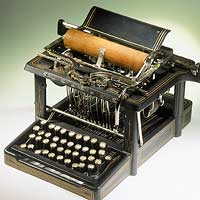
Little initial interest in typewriters
The first Finnish department store to supply typewriters was supposedly Stockmann in Helsinki in the 1890s. As early as 1887, Count Carl Robert Mannerheim, the father of General Mannerheim, had opened Finland’s first office equipment shop, which initially sold wines and office supplies. In 1900, Mannerheim began to import the New Century typewriter model from the United States. Our collection includes a Smith Premier Mod.10C imported by Mannerheim’s company. The company’s brass plate can be seen on the typewriter.
Although there was little initial interest in typewriters – only ten machines were sold in 1903 – Mannerheim paved the way for the typewriter business in Finland and his shop became Oy Systema Ab, the leading importer and seller of typewriters in Finland.
In 1885 copy typists used a typewriter for the first time in the Finnish Senate. The first Remingtons the Senate typists received in 1906, though the minutes of meetings continued to be written by hand. At the same time other government offices began to provide training in typewriting. By the end of the decade the Finnish State Railways employed several female typists.
According to V. Haataja, the first head of sales for Systema Oy, interest in typewriters picked up in the 1910s. In 1915, the company received a single shipment of 100 Smith Premier Simplex typewriters. By the mid-20s Systema Oy’s annual sales averaged 1,000 typewriters per year and its stocks included Remington models.
There were about 20,000 typewriters in Finland at the beginning of the 1930s, and the introduction of portable models boosted sales. Eventually, the growing importance of typewriters for businesses and commerce led to the establishment of new import companies. For instance, SOK, a nationwide cooperative society, imported Royal and Imperial typewriters from the United States.
During the Second World War and the ensuing currency shortage, the demand for typewriters in Finland exceeded import levels. The competition for these limited stocks was stiff, and purchasers would often have to entertain the representatives of office equipment businesses if they hoped to obtain new machines. In 1940, an association was founded to resolve the distribution of imported typewriters and in the mid-50s there was a significant increase in import licenses for typewriters. By 1960 the number of typewriters had reached 250,000 – with annual imports at 40,000 new machines.
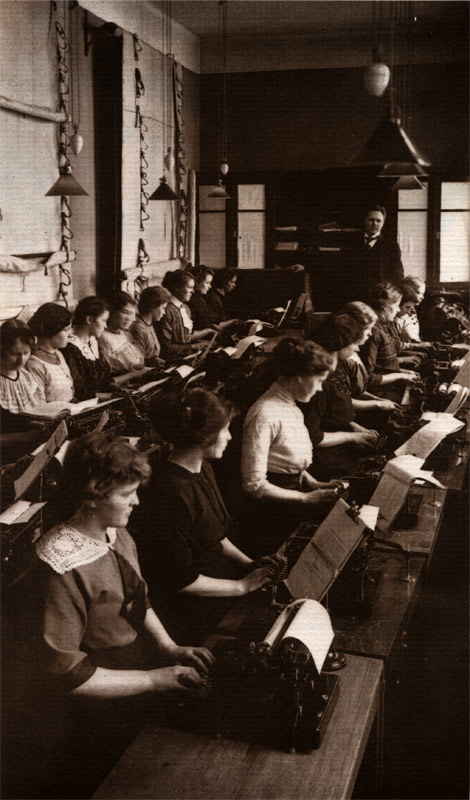
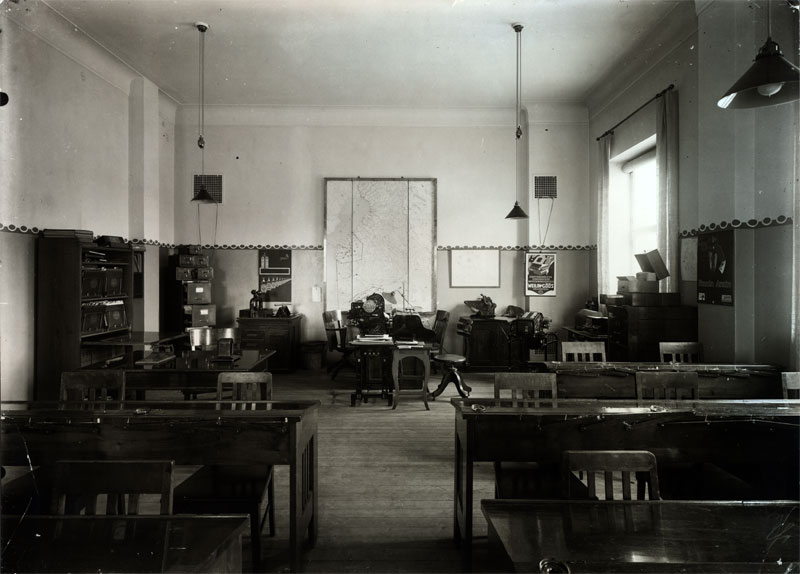
The import of electric models into Finland began in 1936, even though the first working electric typewriter was built in 1921. Interestingly, commercial interest in electric typewriters did not pick up until IBM had developed its new electric model in 1935. In the early 60s, nearly one-third of all typewriters sold in Finland were electric models.
In the 70s and 80s, the electric typewriter began to lose its market position to new electronic typewriters. Equipped with a small screen, the electronic typewriter was more versatile than traditional models. It simplified the correction of typing errors and had a memory that could be used to store recurring texts.
Although the manufacture of personal computers had begun in 1976, the decisive turn was in 1981, when IBM produced its first line of PCs and the portable computer came on the market. In the autumn of 1981 private companies in Finland began to use Nokia’s PC MikroMikko and by 1985 PCs had gained a lasting foothold in Finland.
Typing instruction in Finland
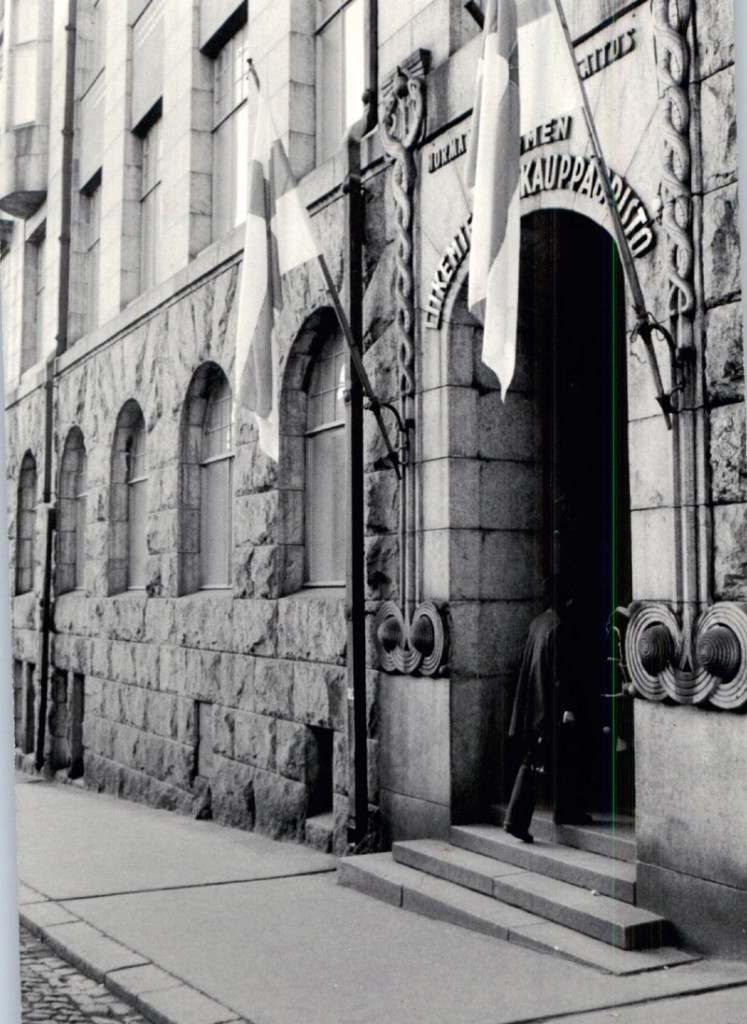
Most copy typist learned to type without any formal training at the turn of the century. Occasionally, typists would receive assistance from co-workers or salespersons who had grasped the link between improved typing skills and increased machine sales.
At first, typing was not a compulsory subject at business colleges in Finland. There is, for instance, no mention of typing instruction in the first statute on business colleges from 1904. Nevertheless, school inspectors from the Ministry of Trade and Industry sought to promote typing instruction and stressed the need for training in modern office equipment. In his inspection report from 1921 Doctor Axel Rosendahl points out: “The teaching of this important subject [typewriting] must be guaranteed, since the ability to type is essential to getting work today.”
In the 1910s and 1920s, typewriting became an elective subject in the majority of business colleges, though several colleges had required their students to study typewriting during the period Finland was a Grand Duchy of Russia (1809-1917). These developments coincided with a general increase in the number of business colleges in Finland.
The Finnish Business College at the forefront
The Finnish Business College opened its doors to students in the autumn of 1898 and received its first typewriter as a donation from the publishing house Gummerus Oy the following year. It was a Remington model 2 from 1877, the machine which merchant F. Helminen had ordered during his trip to the United States. This typewriter has an historical value to our collection.
In 1902, the college purchased a New Century Caligraph model from Count C. Mannerheim’s shop, and students were allowed to use the machine in 1903. In 1907, the college moved to its new facilities, which included a typing classroom. Fourteen typewriters were available, with a variety of models in use: Victor, Oliver, Smith Premier, Barloc, Hammond, Ideal and Continental.
Typing instruction was always purposeful and goal-oriented at the college. Students could study the American touch typing system at the beginning of 1910s and the first textbook on typing was introduced soon afterwards. In 1920, the college adopted a new curriculum and students were required to study six hours of typewriting and penmanship per week.
In 1930, a college student set the Finnish record for most strokes in half an hour at 9,144 – clear proof that the college could provide effective teaching in typing. Unfortunately, the purchase of new machines was hampered by both a reduction in state aid and the prevailing depression in the late 20s and early 30s. The college was also forced to relinquish some of its typewriters to the Finnish military during the Finnish Civil War (1917-18) and the Second World War.
The college acquired its first electric typewriter in 1970, and by 1976 there were enough electric typewriters for students in typing courses. In 1979, touch typing was taught by projecting finger positions onto a large screen. At the same time typing classrooms were soundproofed and furnished with special lightning. The advent of computers and information technology made typewriters obsolete, and the last course to use typewriters at the college was held in 1992.
